Hiking with your dog can be one of the most rewarding experiences, creating unforgettable memories and strengthening your bond. However, it is essential to ensure your furry friend is prepared for the challenges of longer hikes and more rugged terrain. Here are some tips and techniques to help train your dog for hiking adventures.
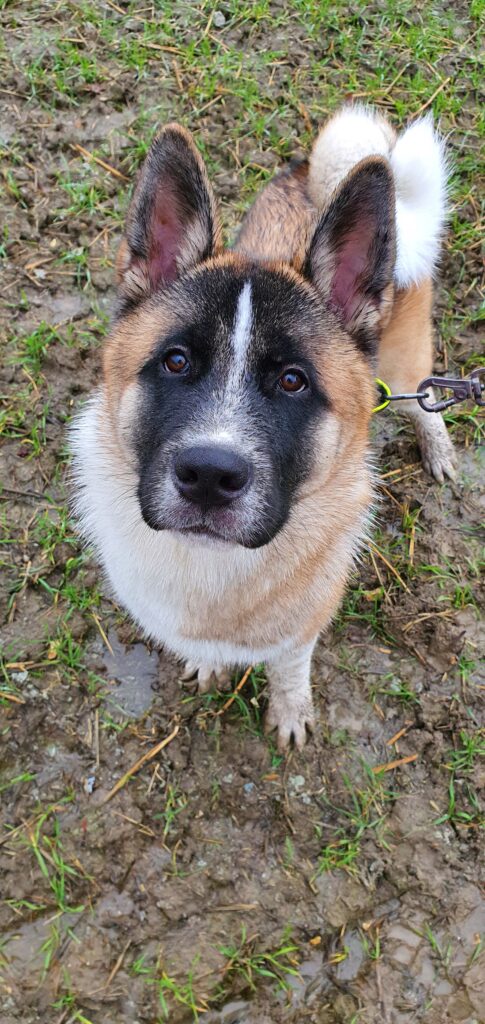

Start with Basic Obedience Training
Before hitting the trails, your dog should have a solid foundation in basic obedience. Commands like sit, stay, come, and heel are crucial for safety and managing your dog on the trail. A well-trained dog is a joy to hike with and ensures the safety of your dog and other trail users.
Tips to Enhance Basic Obedience Training:
Practice in Varied Environments
Dogs can be excellent at following commands in the comfort of their home or backyard, but the real test comes when they are in new and stimulating environments. To ensure your dog’s obedience is reliable no matter where you are:
- Neighbourhood Walks: Start by practising commands during daily walks around the neighbourhood. This helps your dog get used to following commands with common distractions like passing cars, other dogs, and pedestrians.
- Parks and Urban Areas: Gradually introduce your dog to busier environments such as parks, urban streets, and outdoor markets. The increased activity and noise level will help your dog learn to focus amidst distractions.
- Nature Trails: Once your dog is comfortable with commands in urban settings, take them to local nature trails or parks. The presence of wildlife, other hikers, and unfamiliar scents will provide a good challenge.
- Varying Weather Conditions: Practice commands in different weather conditions—rain, wind, and snow—so your dog learns to listen regardless of the environment.
Use Positive Reinforcement
Positive reinforcement is the most effective method for training dogs. It encourages good behaviour by rewarding your dog when they follow a command correctly, making it more likely that will repeat the behaviour in the future.
- Treats: Carry a variety of small, high-value treats to reward your dog immediately after they obey a command. This creates a strong association between the command and the reward.
- Praise and Affection: Verbal praise and physical affection (like petting or a quick play session) are powerful motivators. Use an enthusiastic tone to let your dog know they’ve done well.
- Consistency: Be consistent with your commands and rewards. Always use the exact words for each command and reward good behaviour promptly.
- Gradual Reduction of Treats: As your dog becomes more proficient, you can gradually reduce the frequency of treats and rely more on praise and affection. This helps ensure they will follow commands even when treats are not immediately available.
Introduce Distractions Gradually
Introducing distractions gradually helps your dog learn to focus on you even when there are interesting things happening around them.
- Controlled Distractions: Start with controlled distractions, such as having a friend walk by or dropping a toy nearby. Gradually increase the level of distraction as your dog becomes more confident.
- Distance and Duration: Begin by practising commands from a close distance and for short durations. As your dog’s obedience improves, increase the distance and time they must hold the command.
- Enlist Helpers: Involve friends or family members to create real-life scenarios. They can act as joggers, cyclists, or dog walkers, simulating typical distractions you might encounter on the trail.
Practice Makes Perfect
Regular practice is key to maintaining and improving your dog’s obedience skills.
- Daily Sessions: Incorporate short training sessions into your daily routine. Even five to ten minutes of practice daily can make a big difference.
- Real-Life Applications: Use everyday opportunities to practice commands. For example, ask your dog to sit and stay while you prepare their meal or come when called during a game of fetch.
- Patience and Persistence: Training takes time, and every dog learns independently. Be patient and persistent, celebrating small victories along the way.
Building a strong foundation of basic obedience sets your dog up for success on the trails. Not only will your hikes be more enjoyable, but you’ll also have peace of mind knowing that your dog will respond reliably in various situations. Happy training and even happier hiking!
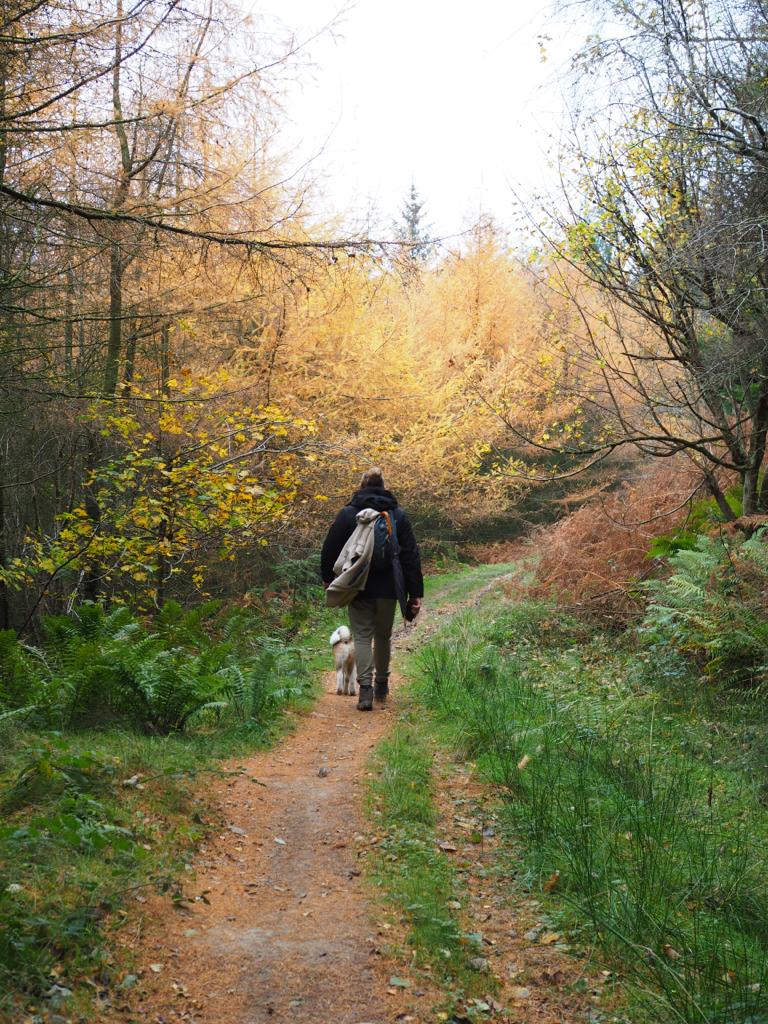
Build Up Stamina Gradually
Just like humans, dogs need to build their endurance over time. Gradually increasing the distance and difficulty of hikes will help your dog become fit and resilient, ensuring that both of you can enjoy longer and more challenging adventures without any issues.
Techniques to Build Up Stamina:
Begin with Short, Easy Walks
Start with shorter, less demanding walks to build your dog’s basic fitness level.
- 20-30 Minute Walks: Begin with 20-30 minute walks on flat terrain. This initial stage helps your dog get accustomed to walking for extended periods without overexertion.
- Consistent Routine: Establish a consistent walking routine, ideally daily, to build endurance steadily.
Gradually Introduce Hills and Longer Walks
As your dog becomes comfortable with shorter walks, start incorporating more variety into your hikes.
- Small Hills: Gradually introduce small hills to your walks. Hills help build muscle strength and cardiovascular endurance.
- Increase Distance: Slowly increase the distance of your walks by 10-15 minutes each week. Pay attention to how your dog handles the extra distance and adjust if necessary.
- Mixed Terrain: Introduce mixed terrain to challenge your dog’s agility and stamina. Include walks on gravel, grass, and dirt paths.
Monitor Your Dog for Signs of Fatigue
It’s crucial to monitor your dog’s behaviour and physical condition during hikes. Dogs can sometimes push themselves too hard, especially if they are eager to please.
- Signs of Fatigue: Look for signs such as heavy panting, slowing down, limping, or reluctance to continue walking. If your dog seems tired or uncomfortable, take a break or cut the hike short.
- Rest Periods: Incorporate regular rest periods into your hikes. Find a shaded spot where your dog can rest, rehydrate, and recover.
- Hydration and Nutrition: Offer water regularly to ensure your dog stays hydrated. Bring along high-energy treats to maintain their energy levels during longer hikes.
Adjust According to Your Dog’s Needs
Every dog is different, and their fitness levels can vary widely. Tailor your training program to suit your dog’s individual needs.
- Age and Breed Considerations: Older dogs or breeds with certain physical limitations may need a slower pace and more frequent breaks. Consult with your vet if you have concerns about your dog’s fitness level.
- Weather Conditions: Adjust the intensity of your hikes based on weather conditions. Avoid strenuous activities during extreme heat and take precautions to prevent heat exhaustion.
Track Progress and Set Goals
Keeping track of your dog’s progress can help you stay motivated and ensure you’re on the right track.
- Log Walks and Hikes: Maintain a log of your walks and hikes, noting the duration, distance, and terrain. This will help you see improvements and identify any patterns or issues.
- Set Realistic Goals: Set gradual, achievable goals for your dog’s fitness journey. Celebrate milestones to keep both of you motivated and engaged.
Cross-Training for Overall Fitness
Incorporating different types of physical activities can enhance your dog’s overall fitness and prevent boredom.
- Swimming: If your dog enjoys water, swimming is an excellent low-impact exercise that builds strength and endurance.
- Fetch and Play: Regular play sessions, such as fetch or tug-of-war, can complement your hiking training by keeping your dog active and engaged.
- Agility Training: To improve your dog’s coordination and stamina, set up a simple agility course in your backyard or at a local park.
Final Thoughts
Building your dog’s stamina gradually is key to ensuring they can enjoy hiking adventures safely and comfortably. By starting with shorter walks, gradually increasing the difficulty, and paying close attention to your dog’s needs, you’ll help them become a fit and happy hiking companion. Remember, the journey to fitness should be enjoyable for both you and your dog. Happy hiking!
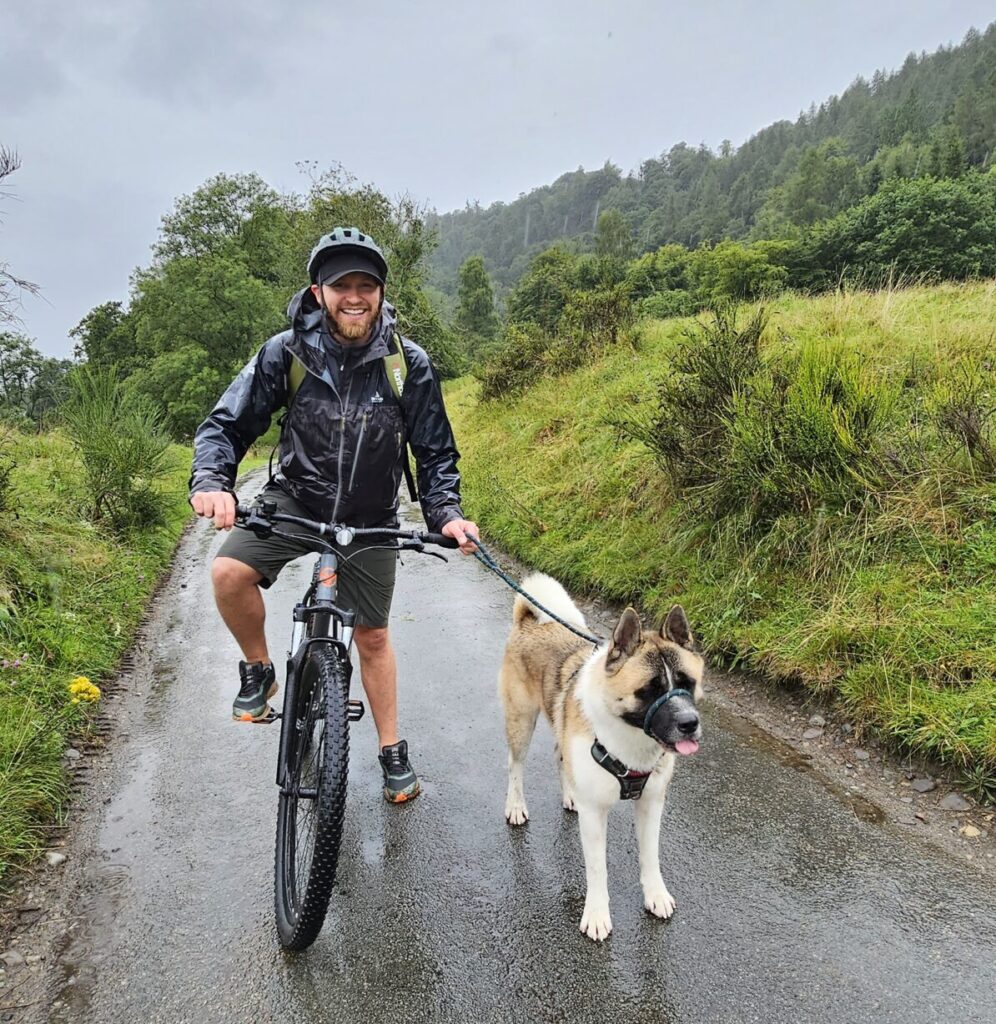
Condition Your Dog’s Paws
Rough terrain can be tough on your dog’s paws. Conditioning their paws helps prevent injuries and discomfort, ensuring that your dog can handle various surfaces with ease.
Tips for Conditioning Your Dog’s Paws:
Walk on Different Surfaces
Exposing your dog to different types of terrain can help toughen their paws and prepare them for the variety of surfaces encountered during hikes.
- Gravel: Walk on gravel paths to help build calluses and strengthen paw pads.
- Sand: Beach walks on sand can help toughen paws while also being a fun, low-impact activity.
- Rocky Paths: Introduce rocky paths gradually to get your dog accustomed to rougher surfaces.
Use Paw Wax or Balm
Protect your dog’s paws from rough surfaces and extreme weather conditions by applying paw wax or balm.
- Protection: Paw wax or balm creates a protective barrier against hot pavement, ice, and rough terrain.
- Moisturization: These products also keep your dog’s paw pads moisturized, preventing cracks and dryness.
Keep Nails Trimmed
Regular nail trimming is essential to prevent snagging and discomfort during hikes.
- Nail Maintenance: Keep your dog’s nails trimmed to a reasonable length. Long nails can cause discomfort and increase the risk of injury.
- Professional Grooming: If you’re not comfortable trimming your dog’s nails, seek the help of a professional groomer or veterinarian.

Hydration and Nutrition
Ensuring your dog stays well-hydrated and properly nourished is crucial for maintaining their energy levels and overall health during hikes. Proper hydration and nutrition help prevent fatigue, heat-related issues, and other health problems that can arise from physical exertion.
Tips for Keeping Your Dog Hydrated and Well-Nourished:
Bring Plenty of Water and a Portable Bowl
Hydration is key to keeping your dog healthy and comfortable during hikes, especially in warm weather.
- Adequate Water Supply: Always bring more water than you think you’ll need. A good rule of thumb is to carry at least 8 ounces of water for every hour you plan to be out, plus extra in case of emergencies or unexpected delays.
- Portable Bowls: Use collapsible or foldable water bowls that are lightweight and easy to carry. Some water bottles come with an attached drinking bowl, making it convenient to offer water to your dog.
- Offer Water Regularly: Stop frequently to offer your dog water, even if they don’t seem thirsty. Dogs can be so excited about exploring that they might not seek out water on their own. Offer water every 15-30 minutes, especially on hot days or during strenuous activity.
- Hydration Checks: Pay attention to signs of dehydration, such as excessive panting, drooling, or dry gums. If your dog shows these signs, offer water immediately and find a shady spot to rest.
Pack High-Energy Treats or Snacks for Long Hikes
High-energy treats and snacks provide a quick source of fuel for your dog during long hikes.
- Nutritious Options: Choose treats high in protein and healthy fats to give your dog sustained energy. Examples include dog-friendly energy bars, jerky, and freeze-dried meat.
- Portion Control: Offer small amounts of treats at regular intervals to maintain your dog’s energy levels without overfeeding. Large meals can cause discomfort and digestive issues, especially during physical activity.
- Special Treats: Consider carrying special, high-value treats for moments when your dog needs extra motivation or when they’ve accomplished something challenging on the trail.
Feed a Balanced Meal Before and After the Hike
Proper nutrition before and after the hike helps your dog perform well and recover quickly.
- Pre-Hike Meal: Feed your dog a balanced meal a few hours before the hike. This gives them time to digest and convert the food into energy. The meal should include high-quality protein, healthy fats, and complex carbohydrates.
- Timing: Aim to feed your dog 2-3 hours before the hike to avoid any stomach upset or discomfort during the activity.
- Balanced Diet: Ensure the meal includes a mix of protein (like chicken or fish), healthy fats (such as fish oil or flaxseed), and complex carbohydrates (like sweet potatoes or brown rice) to provide sustained energy.
- Post-Hike Meal: After the hike, give your dog a nutritious meal to help them recover and replenish their energy stores.
- Protein for Recovery: Include high-quality protein to support muscle repair and recovery.
- Hydration: Ensure your dog drinks plenty of water after the hike. You can also add a bit of water or low-sodium broth to their food to encourage hydration.
- Rest and Digest: After the hike, allow your dog time to rest and digest its meal. Avoid vigorous activity for a few hours to prevent digestive issues.
Additional Considerations
Electrolyte Supplements
For particularly long or strenuous hikes, consider adding electrolyte supplements to your dog’s water.
- Electrolyte Solutions: Use dog-specific electrolyte solutions that help replenish lost minerals and support hydration.
- Dosage and Safety: Follow the manufacturer’s instructions for dosage and ensure the supplement is safe for your dog’s breed and size.
Monitor Your Dog’s Health
Keeping an eye on your dog’s overall health and behaviour during and after the hike is crucial.
- Regular Check-Ins: During the hike, periodically check your dog’s gums and skin elasticity (a quick pinch should snap back quickly) to ensure they are staying hydrated.
- Signs of Fatigue: Watch for signs of fatigue, such as lagging behind, slowing down, or lying down frequently. If you notice any of these signs, take a break and offer water and treats.
- Post-Hike Observation: After the hike, monitor your dog for any signs of soreness, stiffness, or unusual behaviour. Provide a comfortable resting spot and plenty of water.
By ensuring your dog stays well-hydrated and nourished, you’ll help them enjoy the hike to the fullest and return home happy and healthy. Proper preparation and attention to your dog’s needs will make your hiking adventures together both safe and enjoyable.
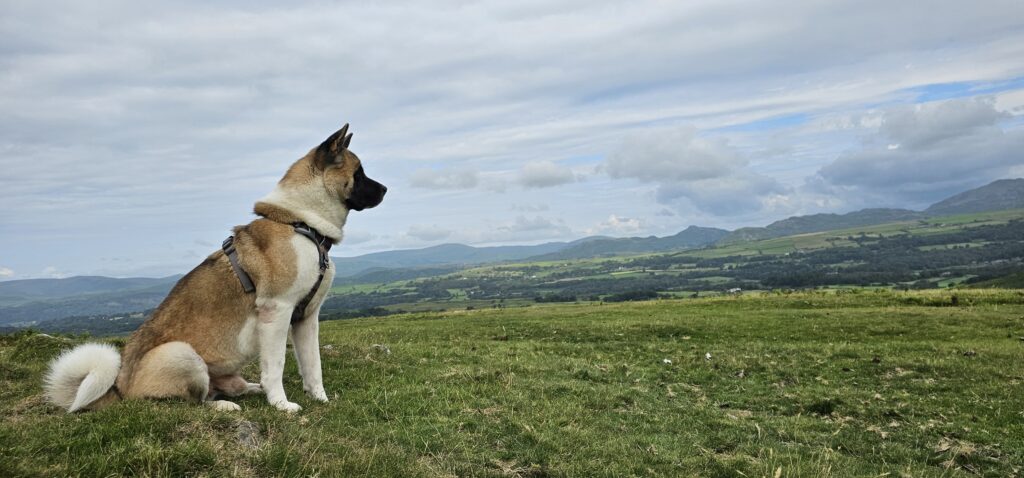
Emergency Preparedness
Being prepared for emergencies is essential when hiking with your dog. Carrying a well-stocked first aid kit and knowing basic first aid for dogs can make a significant difference in handling potential injuries or health issues that may arise on the trail.
Essentials for a Canine First Aid Kit
A comprehensive first aid kit should include various items to address common injuries and ailments your dog might encounter while hiking.
- Bandages and Gauze: Bandages and gauze can cover wounds, control bleeding, and protect injured areas. Non-stick gauze pads are ideal for dressing wounds without causing additional irritation.
- Antiseptic Wipes and Solution: To prevent infection, clean cuts, scrapes, and abrasions with antiseptic wipes. An antiseptic solution like chlorhexidine can also disinfect wounds.
- Tweezers and Scissors: Tweezers are essential for removing splinters, thorns, or ticks from your dog’s skin. Scissors can be used to cut bandages or fur around a wound.
- Tick Removal Tool: Carry a tick removal tool to safely and effectively remove ticks. Ticks can carry diseases, so it’s important to remove them as soon as they are detected.
- Hydrogen Peroxide: Hydrogen peroxide can be used to induce vomiting in dogs that ingest something toxic (only under the guidance of a veterinarian).
- Muzzle: In case your dog is in pain and may bite, having a muzzle can help safely manage and treat them.
- Emergency Blanket: An emergency blanket can provide warmth if your dog is in shock or suffering from hypothermia.
- Gloves: Use disposable gloves to maintain hygiene and prevent contamination when treating injuries.
Recognizing Common Hiking Ailments
Knowing how to identify and respond to common hiking-related health issues can help you take quick and effective action.
Dehydration:
- Signs: Dry gums, excessive panting, lethargy, sunken eyes, and loss of skin elasticity.
- Response: Offer water immediately and move to a shaded area. If your dog does not improve, seek veterinary care as soon as possible.
Heatstroke:
- Signs: Heavy panting, drooling, rapid heartbeat, weakness, vomiting, and collapse.
- Response: Move your dog to a cool, shaded area. Apply cool (not cold) water to their body, especially the belly, paws, and armpits. Offer small amounts of water to drink. Seek emergency veterinary care immediately.
Hypothermia:
- Signs: Shivering, lethargy, weak pulse, and pale or blue gums.
- Response: Wrap your dog in a warm blanket and move to a warm area. If symptoms are severe, seek veterinary care.
Cuts and Scrapes:
- Signs: Visible wounds, bleeding, and limping.
- Response: Clean the wound with antiseptic wipes. Apply pressure with gauze to control bleeding. Cover with a bandage and monitor for signs of infection. Seek veterinary care if the wound is deep or does not heal properly.
Paw Injuries:
- Signs: Limping, licking or chewing paws, and visible cuts or abrasions.
- Response: Clean the affected area with antiseptic wipes. Apply a paw balm to soothe and protect. Cover with a bandage if necessary to keep it clean.
Insect Bites and Stings:
- Signs: Swelling, redness, itching, and pain at the site of the bite or sting.
- Response: If the stinger is visible, use tweezers to remove it. Apply a cold compress to reduce swelling. Monitor for signs of an allergic reaction, such as difficulty breathing or excessive swelling, and seek veterinary care if necessary.
Additional Emergency Tips
Stay Calm: Your dog can sense your emotions. Staying calm will help reassure them and make it easier to handle the situation.
Know Your Route: Before setting out, familiarize yourself with the trail and the nearest veterinary clinics. Having this information on hand can save valuable time in an emergency.
Emergency Contacts: Keep a list of emergency contacts, including your veterinarian and local animal hospitals, in your first aid kit.
Basic First Aid Training: Consider taking a pet first aid course to learn how to perform CPR and other life-saving techniques for dogs.
By being prepared and knowing how to respond to emergencies, you can ensure that you and your dog are ready to handle any situation that arises on your hiking adventures. This preparation not only keeps your dog safe but also provides peace of mind, allowing you to enjoy your time together in nature.
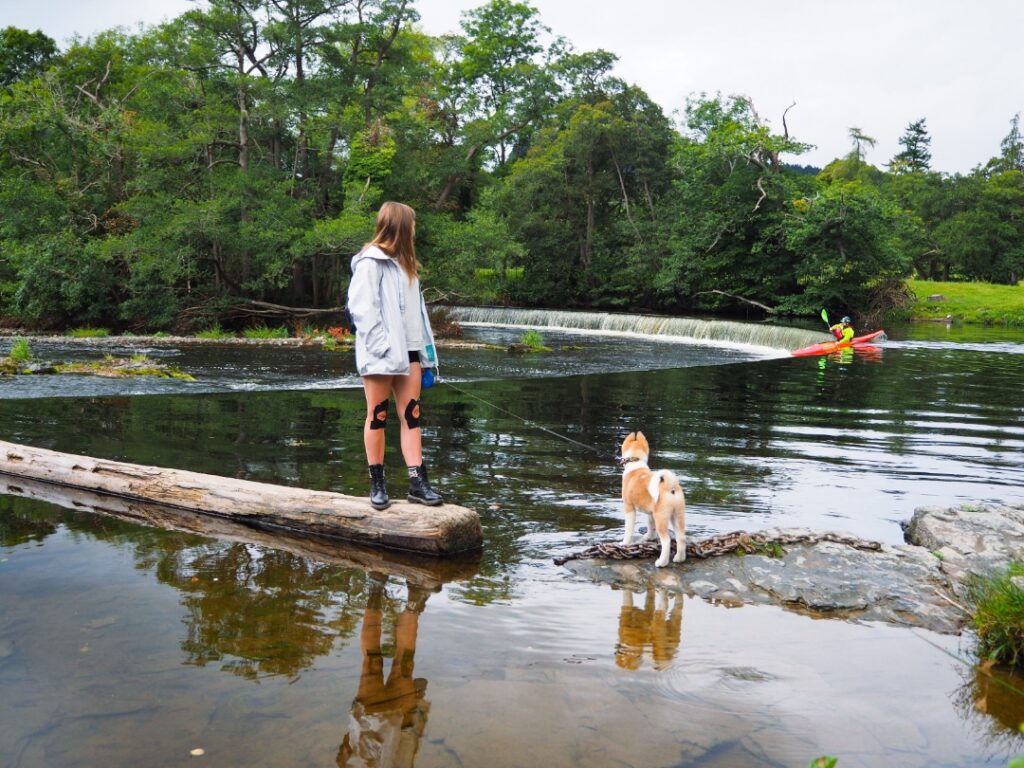
Listen to Your Dog
Understanding your dog’s cues and signals while hiking is crucial to ensuring its safety and well-being. Dogs communicate their needs and discomfort through various behaviours and body language. By paying close attention to these signs, you can adjust your hiking plans to keep your dog comfortable and happy.
Signs to Watch For:
1. Limping or Reluctance to Walk:
- Signs: Your dog may limp or favour one leg, indicating potential pain or injury. They may hesitate to continue walking or avoid putting weight on a specific limb.
- Response: Stop and examine your dog’s paws and legs for signs of injury, such as cuts, thorns, or debris. Check for any swelling or sensitivity. If necessary, gently palpate the affected area to identify sources of discomfort. Consider ending the hike early or taking frequent breaks to allow your dog to rest.
2. Excessive Panting or Drooling:
- Signs: Panting is a normal way for dogs to regulate their body temperature, but excessive panting or drooling can indicate overheating, stress, or dehydration. Your dog’s tongue may appear excessively dry or pale.
- Response: Find a shaded spot and offer your dog water immediately. Use a damp cloth or water from your supplies to cool your dog’s belly, armpits, and paws. Avoid using cold water, as it can shock your dog’s system. Allow your dog to rest until breathing is normal before continuing the hike. If symptoms persist, consider seeking veterinary attention.
3. Lying Down Frequently or Lagging Behind:
- Signs: Your dog may lie down frequently during breaks or lag behind your pace. This behaviour can indicate fatigue, discomfort, or simply needing a break.
- Response: Respect your dog’s need for rest and recovery. Allow them to dictate the pace of the hike and take breaks as needed. Offer water and monitor their behaviour for any signs of improvement or worsening condition. Consider shortening the hike or adjusting the trail difficulty to accommodate your dog’s energy levels.
Additional Considerations:
Body Language: Observe your dog’s overall body language for clues about their well-being. Signs of stress or discomfort may include flattened ears, tucked tail, or avoiding eye contact.
Communication: Establish a bond of trust and communication with your dog. Encourage them with positive reinforcement and praise when they exhibit behaviours you want to encourage, such as staying close or resting when needed.
Environmental Factors: Be mindful of external factors such as weather conditions, terrain difficulty, and the presence of wildlife that may affect your dog’s comfort and behaviour.
Training and Preparation: Regularly train and condition your dog for hiking adventures to build its stamina and resilience. Gradually expose it to longer hikes and varied terrains to increase its confidence and physical endurance.
By listening to your dog and responding to their signals promptly, you can ensure a safe and enjoyable hiking experience for both of you. Paying attention to their needs strengthens your bond and allows you to explore the great outdoors together with confidence and care.
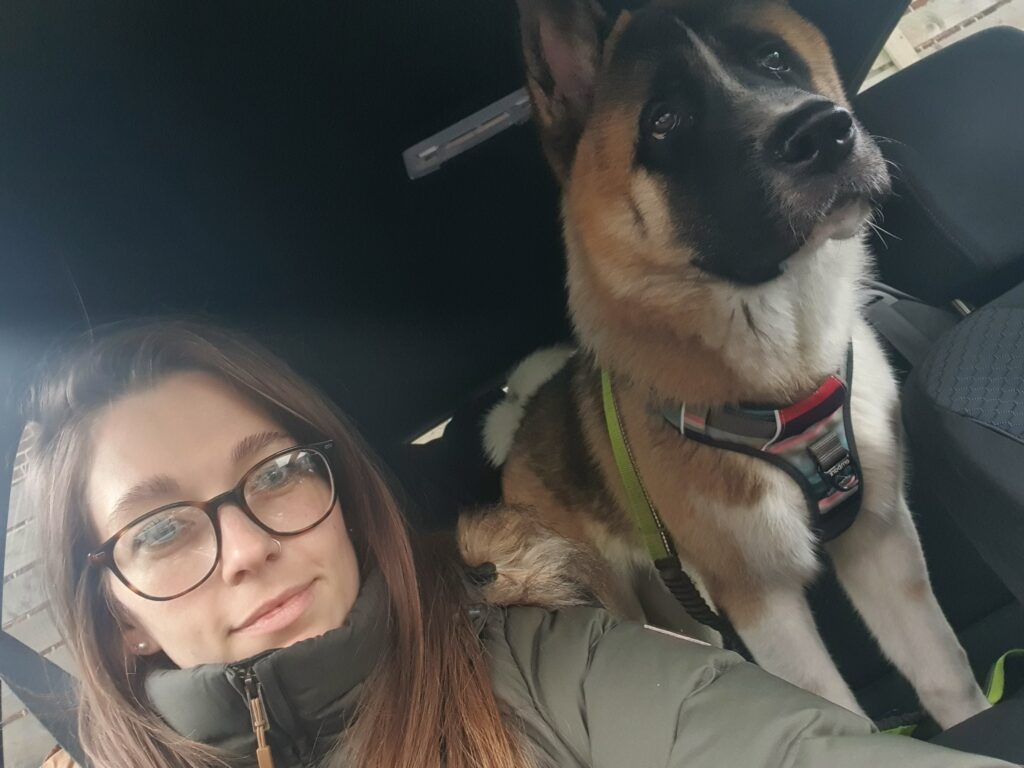
But of Course Have fun!!
Training your dog for hiking adventures is a chance to strengthen your bond and enjoy the outdoors together. Celebrate achievements, big and small, with enthusiasm and rewards to build confidence. Stay positive and patient during training, turning challenges into opportunities for learning and growth. Keep sessions fun and engaging with games and toys to keep your dog excited about learning new skills. Pay attention to your dog’s cues and preferences on the trail, adjusting your pace and route accordingly. Use positive reinforcement to communicate effectively and foster a joyful partnership. Enjoy each moment exploring nature with your furry friend, creating lasting memories along the way.
Training your dog for hiking adventures requires patience, consistency, and a lot of love. By preparing your dog properly, you ensure a safe, enjoyable, and rewarding experience for both of you.
Happy hiking!


Leave a Reply